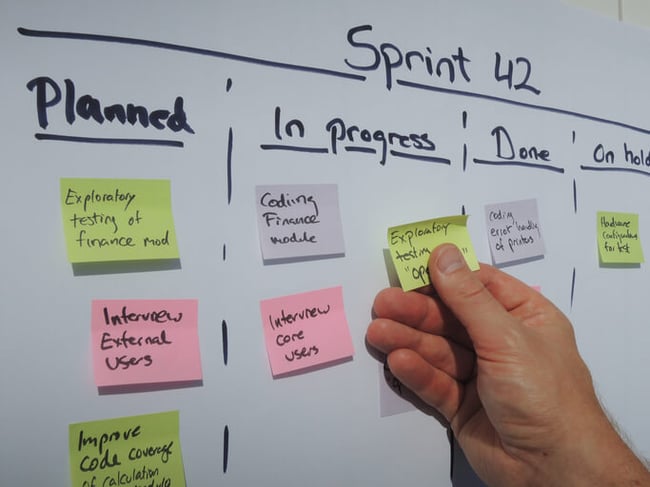
Competing in today’s global market requires agility. Companies need to be able to quickly adjust to changing market conditions and consumer trends to stay ahead of the competition, and as business becomes more globalized, the pool of competitors keeps growing. Despite an economic downturn and increased global competition, Connecticut manufacturers continue to thrive, partly because of agile IT support.
As of August 2016, there were 160,000 manufacturing jobs in the state, and the Connecticut Labor Department predicts that by July 2024, the manufacturing sector will grow by 2.8 percent, adding another 4,400 jobs. Most of that growth will be in aerospace manufacturing (1,562 jobs), medical equipment and supplies (654 jobs), and metalworking (591 jobs). In addition, close to 60 percent of New England manufacturing jobs are categorized as “advanced,” including 72 percent of manufacturing jobs in Connecticut. Advanced manufacturing is defined as using "innovative technology to improve products and manufacturing processes," including computer networking technology for applications, such as automation and analytics, using the Internet of Things (IoT). Estimates indicate revenue from advanced manufacturing adds $19.4 billion to the state’s economy.
To maintain their competitive advantage, advanced CT manufacturers not only need to automate production, but also continually update technical processes and capabilities. That’s where agile IT comes in.
Agile Means Iterative Deployment
Agile provides a new approach to managing IT development and teams that can more easily accommodate rapid changes and adapt to disruptions in processes. Agile IT development continually assesses the efficiency of a computerized process, making corrections and adjustments as needed. Agile is an iterative process of trial and correction; processes are continually revisited and assessed, with new directions defined to improve efficiency after each assessment. Agile is especially useful in customized software development and deployment; new code is written, tested, deployed, adjusted, and revised.
The agile process of inspect and adapt has been demonstrated to improve operating efficiency and reduce costs. Rather than halting operations to overhaul the system, production continues at the same time processes are improved. Production performance provides data that allows the team to calibrate successes and understand failures before making adjustments and redeploying to test the processes again.
While agile processes are ideally suited for software development wherein trial and error can be accommodated quickly, it’s more complex when managing an agile IT infrastructure for manufacturing. Making changes in IT infrastructure is more complicated than testing source code.
Adapting Production As You Go
Traditionally, developing an IT infrastructure requires following a rigid process wherein each step has to be completed before moving onto the next one. The steps usually include:
- Project planning
- Project design
- Design testing
- IT implementation
- System maintenance
Critics say this approach is time-consuming and wasteful, and by the time the IT project is complete, it no longer meets the business requirements. Hence, IT architects are working to apply agile processes to IT infrastructure by collaborating with end users to define their IT needs as they go while adjusting and testing at each step.
Agile IT deployment has a number of advantages. First, deployment is faster. Rather than waiting for the end-to-end infrastructure to be completed and tested, which could take months, new systems are put online as soon as they are ready. Agile also provides flexibility in accommodating rapid deployment and change. Providing continuous feedback to shape the infrastructure also ensures that end users get the functionality they need, and the IT system continues to provide value. And with each new deployment, problems are fixed in previous deployments so the overall system becomes increasingly more efficient.
Of course, agile IT has its downsides as well. Deployments are more frequent, which can be disruptive. For example, adding a new blade server requires the rest of the infrastructure to be ready to handle new data storage. Agile deployment also tends to have a ripple effect on the organization, so all parties affected have to be ready and in sync when it comes time for the next upgrade. Because the agile infrastructure tends to be more complex, backing out of problems is more complex as well. Furthermore, it’s important to maintain Agile infrastructure housekeeping, such as updating documentation and removing outdated configurations.
On the whole, Agile IT implementation makes it easier for manufacturers to stay nimble, and make production changes as needed to develop new products, accommodate new parts and suppliers, and reduce costs. However, because changes in an agile IT infrastructure affect both hardware and software, it’s essential to consider hardware restrictions and changes to the physical network. That’s why agile manufacturing methods rely more extensively on cloud resources. By using cloud computing and cloud data services, manufacturers can add and expand resources as needed. There is less physical infrastructure to modify, so changes are not only made faster, but they also don’t require additional networking hardware.
Cloud computing services also enable more powerful analytics. Using IoT data, big data techniques can be utilized to analyze manufacturing processes to identify choke points and production inefficiencies. Big data analytics tend to require massive storage capacity and more computing power, and it’s more cost-effective to apply the elastic resources of cloud computing. Online data repositories and production software make it easier to roll back system changes, test new procedures, and maintain close control over agile IT with minimal cost.
Finding the right IT outsourcing partner makes it easier to stay agile. Advanced manufacturing support calls for experts who understand agile processes and can maintain a secure and stable hosted infrastructure. Agile IT also requires reliable networking connectivity, including secure infrastructure, data backups, disaster recovery, and more. As you are assessing your own agile IT production processes, consider calling in an IT expert, such as NSI, to help you get more from your infrastructure.







